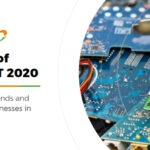When IT and technology purchases are planned, it is important to remember the 20/80 principle: from the total costs of a workstation (TCO, Total Cost of Ownership), the share of equipment costs is only 20%. This means that the equipment purchase price as such does not consume the largest share of the ICT budget.
First – Fix the 20% of costs
Cost savings related to equipment purchases can be obtained through competitive bidding processes, rational equipment choices and flexible it-equipment leasing. Owning is often the most inefficient option both due to the related spend and the lack of comprehensive lifecycle management services.
When you have optimised the purchase price, it is time to move on to the total cost of ownership. The use phase-related costs in the ICT budget are the area in which it is advisable to target the most extensive rationalisation projects and cost-saving efforts.
What does the 80% of costs consist of?
The largest cost item consists of areas such as maintenance, data security updates, software updates, user support, IT problem management, software, software licences, various integrations, and applications. IT departments are busy administrating the workstations in use instead of focusing on their actual main tasks – not to mention the handling of equipment write-offs.
Proactive and smart lifecycle management is the model that helps reduce ICT costs. Lifecycle management can be applied to the management of existing hardware, but it also works in situations in which more hardware is obtained and operations are expanded. It is of paramount importance that the overall process functions well when combined with the customer’s IT and the processes of the customer’s IT partners. This is supported by an asset register and an easy equipment return process with short lead times and guaranteed information security.
An asset register may be necessary in future due to various regulations and requirements if the organisation is required to prove its professional administration practices. The new information security and data protection requirements (such as the GDPR) include requirements concerning the monitoring of data related to hardware asset management.
What are the cost savings in practice?
TCO calculations help you target the cost-savings correctly. Proactive and smart lifecycle management helps achieve significant cost-savings in the following ways:
- IT equipment rentals from a limited selection (CYOD model)
- Anticipating problems with computers, meaning real-time monitoring of their functioning
- Optimising the development roadmap with help from experts
- Providing an affordable leasing price for efficient workstations that have been in business use and thus recycling hardware within the company’s own organisation
- Improving the efficiency of pre-installations and logistics
- Automating monitoring
- Ensuring the quality of IT equipment



